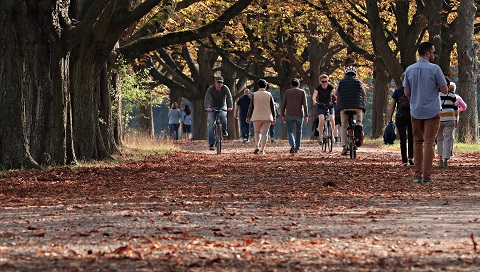Urban greening protects against cardiovascular risk factors, some diseases, and mortality depending on gender and sex differences
The results of a recently published study indicate that urban greening is more beneficial for women in terms of the possibility of suffering a stroke and in relation to cardiovascular risk factors, while men are more protected from cardiovascular diseases

A group of researchers from the Forest Science and Technology Centre of Catalonia (CTFC), the Institute of Environmental Science and Technology (ICTA-UAB), the Department of Geography of the UAB, and the Mount Sinai Hospital in New York has reviewed articles that study the relationship between cardiometabolic health and urban greening with a focus on the associated gender and sex differences
The study, which has just been published in the Journal of Urban Health, evaluates the differences in terms of sex and gender in the relationship between urban greening and cardiometabolic health through a bibliographic review.
The results suggest that urban greening protects against cardiovascular risk factors, some diseases, and mortality. When the findings are assessed by sex and gender, the results indicate that urban greening is more beneficial for women in terms of stroke risk and cardiovascular risk factors, but not for hypertension and the accumulation of lipids. On the other hand, men are more protected in terms of cardiovascular diseases.
According to Marta Fernández, ICTA-UAB researcher and lead author of the article, "there are different explanations, mainly related to the time spent in green spaces and how this time is spent. For example, women interact more, as they spend more time there while taking care of the children." Therefore, being able to have green spaces seems particularly important for women's health.
At the same time, the authors have indicated that the lack of specificity in the use of urban green spaces (such as having spaces for different sports) is what makes men unmotivated to use them and exercise there. Men are more likely to participate in organized activities, such as playing soccer, while women prefer walking, running, dancing, or playing sports.
These gender differences can even be seen during childhood and adolescence. In the case of children, the authors pointed to gender as a possible determinant, as boys have more independence to move freely, which allows them to be more physically active. This is because families adopt gendered behaviors when it comes to safety.
Roser Maneja, deputy research director of the CTFC and co-author of the article, comments that "the planning of green spaces should integrate a gender perspective. Urban greeneries must be safe and welcoming spaces, accessible to women and girls without fear, apprehension, or discomfort. In addition, women must have the possibility to do physical activity". Some authors have suggested having daycare centers in parks so that families can exercise while taking care of their young children. There is also a need for scheduled and supervised activities for girls and teenagers so that families allow them to participate in outdoor activities.
Therefore, future research should examine sex and gender as they relate to urban greening and health, and consider the people who do not fit gender binarity.
More information:
Fernández Núñez, MB., Campos Suzman, L., Maneja, R., Bach, A.; Marquet, O.; Anguelovski, I.; Knobel, P. The Differences by Sex and Gender in the Relationship Between Urban Greenness and Cardiometabolic Health: A Systematic Review. Journal of Urban Health (2022). https://doi.org/10.1007/s11524-022-00685-9